The most popular vacation to New Zealand is taking a road trip around to see the scenic islands. There are numerous campervan companies, that will help you drive across the beautiful North or South Island.
If you are looking to explore the North Island by campervan, then read below to learn about the numerous nature spots you can see along the North Island of New Zealand. These top attractions on the North Island will make for the best campervan trip possible!
Quick Trip Overview
- Location: North Island, New Zealand
- Starting Airport: Auckland
- Ending Airport: Auckland
- Time of Year: Hit it during the Summer months! I went in October. Try December – February
- Time: 7 Days
- Estimated Cost: $3,000 – International flight, camper van for a week, food, excursions.
Best Time to Travel to New Zealand
The best time to travel to New Zealand depends on your preferences and the activities you plan to engage in. Generally, New Zealand experiences four distinct seasons:
- Summer (December to February):
- Pros: Warm temperatures, long daylight hours, ideal for outdoor activities like hiking, beaches, and water sports.
- Cons: Peak tourist season, higher accommodation costs, and crowded attractions.
- Autumn (March to May):
- Pros: Mild temperatures, beautiful fall foliage, fewer tourists, and lower accommodation prices.
- Cons: Some regions may experience rainfall, especially on the West Coast.
- Winter (June to August):
- Pros: Ski season in the Southern Alps, fewer tourists, stunning snow-capped landscapes.
- Cons: Cold temperatures, shorter days, limited outdoor activities in some regions.
- Spring (September to November):
-
- Pros: Blooming flowers, emerging wildlife, increasing temperatures, and fewer tourists than in summer.
- Cons: Unpredictable weather, occasional rain, especially in September.
Consider your preferred activities, weather preferences, and tolerance for crowds when planning your visit to New Zealand. If you’re into skiing, winter is ideal, while summer is perfect for beach lovers and outdoor enthusiasts.
Campervans
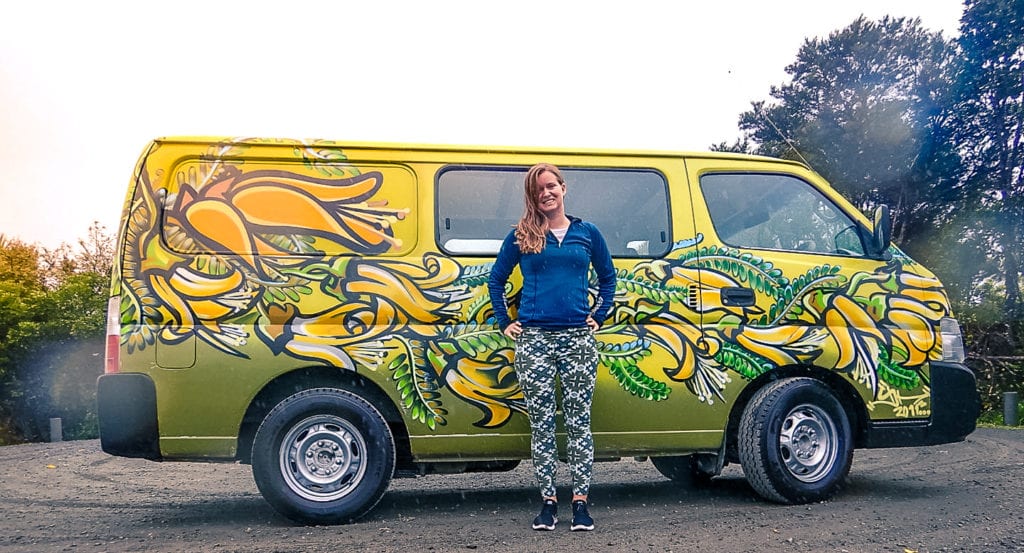
The freedom to camp in designated areas allows for scenic stays in the midst of New Zealand’s breathtaking landscapes, while numerous campgrounds with facilities offer convenience. Navigating the country’s winding roads requires caution, but the reward is access to picturesque routes and the flexibility to tailor the journey. Whether cruising through the North or South Island, campervanning in New Zealand is a unique and immersive way to experience the country’s natural wonders, providing an unforgettable travel adventure.
Here are some of the popular campervan rental agencies:
I went with Escape Campervans because I loved the old school hippie style vans that they had. You will see a lot of Escape Campervans about, and Jucy ones. But it may also just be because of their bright paint jobs.
Where to Park the Campervan in New Zealand
Parking your campervan in New Zealand offers various options, ensuring flexibility and convenience during your road trip.
- Campgrounds: New Zealand boasts a network of well-equipped campgrounds with facilities such as power hook-ups, showers, and communal areas. These campgrounds are ideal for a comfortable and social camping experience.
- Freedom Camping: New Zealand allows freedom camping in designated areas. While this provides a more secluded experience amidst nature, it’s crucial to adhere to responsible camping practices and local regulations.
- Holiday Parks: Many holiday parks across the country cater to campervans, providing amenities like kitchen facilities and laundry services.
- Scenic Stops: New Zealand is dotted with scenic spots that allow campervans to park temporarily, offering breathtaking views and photo opportunities. Always check local regulations and signage to ensure you’re parking in permissible areas.
You can check out a list of their parks here.
Itinerary
- Day 1: Land in Auckland
- Day 2: Waiheke Island –
- All day, explore Auckland after
- Day 3: Cathedral Cove / Hot Water Beach
- Auckland to Cathedral Cove: 2 hours and 35 minutes. Time at Cathedral Cove: 3 hours
- Cathedral Cove to Hot Water Beach: 12 minutes Time at Hot Water Beach: 3 hours
- Campground: Hotwater Beach Top 10 Holiday Park
- Day 4: Waiotapu Geothermal Reserve / Hot Springs / Rotorua Redwood Treewalk
- Hot Water Beach to Wai-O-Tapu: 3 hours and 30 minutes Time at Wai-O-Tapu: 2 hours
- Wai-O-Tapu to Waikite Valley Thermal Pools: 10 minutes Time at Waikite Valley Thermal Pools: 2 hours
- Waikite Valley Thermal Pools to Redwood Tree Walk: 30 minutes Time at Waikite Valley Thermal Pools: 1 hour
- Campground: Motutere Bay – Lake Taupo TOP 10 Holiday Park
- Day 5: Tongariro National Park
- Motutere Bay – Lake Taupo TOP 10 Holiday Park to Tongariro National Park: 23 minutes Time at Tongariro National Park: 5 hours to 8 hours
- Tongariro National Park to Huka Falls: 50 minutes Time at Huka Falls: 30 minutes to 1 hour
- Huka Falls to Craters of the Moon: 6 minutes Time at Craters of the Moon: 45 minutes
- Campground: Motutere Bay – Lake Taupo TOP 10 Holiday Park again or Waitomo TOP 10 Holiday Park
- Day 6: Waitomo Glowworm Caves
- Craters of the Moon to Waitomo Caves: 1 hour 50 minutes Time at Waitomo Caves: 4 hours
- Campground: Waitomo TOP 10 Holiday Park
- Day 7: Return to Auckland
Waiheke Island
Waiheke Island, located a short ferry ride away from Auckland, is a paradise for wine enthusiasts. Renowned for its vineyards and wineries, Waiheke offers a unique wine-tasting experience against the backdrop of stunning landscapes. The island is easily accessible from Auckland by a 40-minute ferry journey. Once on Waiheke, visitors can explore award-winning vineyards, savoring locally-produced wines, and indulging in gourmet food pairings. The island’s warm climate is conducive to grape cultivation, resulting in a diverse range of wines, including acclaimed varieties like Syrah and Sauvignon Blanc. Whether touring vineyards, attending wine festivals, or simply enjoying a leisurely day amidst scenic vine-covered hills, Waiheke promises a delightful escape for wine connoisseurs and day-trippers alike.
Exploring Waiheke’s wineries by biking or walking is a delightful and leisurely experience. The island offers well-maintained cycling and walking trails that wind through picturesque landscapes, providing a scenic journey between vineyards. Biking is a popular choice, and visitors can either bring their own bikes on the ferry or rent them locally.
Many wineries on Waiheke have designated bike racks, making it convenient to park and explore on foot. The slower pace of biking or walking allows for a more immersive experience, letting you soak in the island’s natural beauty and discover hidden gems along the way. Some wineries even offer guided walking tours or have their own scenic trails, enhancing the overall adventure of indulging in exquisite wines while enjoying the fresh air and stunning scenery of Waiheke Island.
Cathedral Cove
Cathedral Cove, located on the Coromandel Peninsula, is a natural wonder that beckons visitors with its stunning beauty. Approximately a two and a half to three-hour drive from Auckland, the journey to Cathedral Cove is well worth it. The site features a picturesque archway naturally carved into the rock, framing the turquoise waters and golden sands below.
To fully appreciate the area, plan to spend a few hours exploring the cove, walking along the scenic coastal paths, and perhaps taking a refreshing dip in the clear waters. Entrance to Cathedral Cove is free, and visitors can access it via a walking track or by boat. Whether you’re captivated by the coastal views or eager to relax on the pristine beach, Cathedral Cove promises a memorable day trip from Auckland without any entrance fees.
Hot Water Beach
Cathedral Cove and Hot Water Beach are both captivating destinations located on the Coromandel Peninsula, approximately a two-hour drive from Auckland. While Cathedral Cove dazzles with its natural rock arch and pristine beach, Hot Water Beach offers a unique geothermal experience with hot springs beneath the sand. Planning a day trip to explore both sites is feasible, allowing you to revel in the coastal beauty of Cathedral Cove and indulge in the relaxing hot pools at Hot Water Beach. Remember to check tide times for Hot Water Beach, as the hot springs are accessible during low tide. The proximity of these two wonders makes for a memorable and diverse adventure just a short drive away from Auckland.
This unique phenomenon allows visitors to dig their own hot pools during low tide, creating a personalized spa experience. The beach’s hot water is sourced from two underground springs rich in minerals. To make the most of your visit, it’s advisable to bring a shovel, or you can rent one locally. Checking the tide times is crucial, as the hot springs are accessible two hours before or after low tide. The beach can get crowded, so arriving early is recommended. While there is no entrance fee for the beach, the cost of renting a shovel may apply. Embrace the therapeutic warmth of the hot pools and enjoy the stunning coastal surroundings for a memorable experience at Hot Water Beach.
Tips for visiting Hot Water Beach:
- The hot water bubbles to the surface two hours each side of low tide.
- A quick google of “Low Tide Hot Water Beach” will give you a result of the next low tide. From there you have two hours before, and two hours after that time to get to the beach to dig a hole. The tide typically is in the evening around 6:55 PM. However, always check!
- You can rent shovels from local shops.
- Dig near the rock that is in the ocean. While this sounds like a vague tip, if you arrive and there is no one else there, you will spot down the beach a large flat rock that is not far off the beach. If you dig in line with that rock you will find the hot water.
- The closer you are to the rock, the hotter the water.
- Enjoy with quick dips into the ocean to cool down!
Parts of the beach have some very warm currents, and areas where it’s a little more lukewarm. You will spend a bit of time trying to figure out where a good place for your hole is.
Wai-o-Tapu Geothermal Reserve
Wai-O-Tapu Geothermal Wonderland, situated near Rotorua in New Zealand, is a mesmerizing geothermal reserve renowned for its vibrant and otherworldly landscapes. The reserve is approximately a three-hour drive from Hot Water Beach.
Cost to Visit: the entrance fee for Wai-O-Tapu is around NZD 32 for adults. Prices may vary, check the official website for the most up-to-date information.
Things to Do:
- Champagne Pool: Marvel at the striking colors of the Champagne Pool, a large hot spring with a mineral-rich and brilliantly colored rim.
- Lady Knox Geyser: Witness the daily eruption of Lady Knox Geyser, reaching impressive heights due to the addition of a soap-like substance.
- Artist’s Palette: Explore the Artist’s Palette, an area with an array of vividly colored pools and steaming fumaroles.
- Wai-O-Tapu Mud Pool: Experience the bubbling and boiling mud at the Wai-O-Tapu Mud Pool, adding to the surreal geothermal spectacle.
Fun Facts:
- Sacred Waters: Wai-O-Tapu holds cultural significance for the local Maori people, with many of its features considered sacred.
- Thermal Activity: The reserve showcases a diverse range of thermal activity, including geysers, hot springs, and mud pools.
Note: The park no longer accepts cash, but will accept major credit cards. Or you can book in advance online.
Hot Springs
While there aren’t hot springs directly associated with Wai-O-Tapu Geothermal Wonderland, the Rotorua region, where Wai-O-Tapu is located, is renowned for its geothermal activity and is home to various hot springs. Here are some examples:
1. Polynesian Spa:
- Location: Rotorua
- Prices: Admission prices vary based on pools and services, prices start around NZD 30.
- Highlights: Offers a range of hot mineral pools with temperatures ranging from 36 to 42 degrees Celsius. The spa overlooks Lake Rotorua, providing a scenic and relaxing experience.
2. Kerosene Creek:
- Location: Approximately 30 minutes from Rotorua.
- Prices: Free to access.
- Highlights: A natural hot spring where a warm stream meets the cold water of the creek, creating a natural thermal pool.
3. Waikite Valley Thermal Pools:
- Location: About 30 minutes from Rotorua.
- Prices: Admission prices vary, starting around NZD 30 for adults.
- Highlights: Offers both hot pools and a large freshwater swimming pool. The thermal waters are sourced from the nearby Te Manaroa Spring.
Or, if you want to enjoy the mud baths at Rotorua then make sure you book far in advance. Rotorua, located in the heart of New Zealand’s North Island, is famous for its geothermal wonders, including the captivating mud baths. One of the popular spots to experience this unique natural phenomenon is Hell’s Gate Geothermal Park. Here, visitors can immerse themselves in therapeutic mud baths created by the geothermal activity beneath the Earth’s surface.
The mud, enriched with minerals and volcanic elements, is believed to have revitalizing effects on the skin. As you apply the warm, silky mud to your body and soak in the natural geothermal pools, surrounded by the otherworldly landscape, you’ll not only enjoy a relaxing spa-like experience but also connect with the Earth’s geothermal forces. The mud baths at Rotorua provide a distinctive and rejuvenating encounter, making them a must-try for those seeking both relaxation and the marvels of geothermal activity.
Rotorua Redwood Walk
Waikite Valley Thermal Pools to Redwood Tree Walk: 30 minutes
Cost: $29 NZD
Embark on a serene journey through the towering giants of the Rotorua Redwood Forest with the Redwood Treewalk. Located a short distance from the thermal spas of Rotorua, this enchanting walk
among the majestic redwoods offers a tranquil escape into nature. The cost of admission allows you to traverse a network of suspended bridges, providing a unique perspective on these ancient trees. The Redwood Treewalk is not only a breathtaking experience but also an eco-friendly one, as the lights illuminating the trees at night are powered by sustainable energy sources. Marvel at the sheer height and age of these redwoods, some exceeding 110 years, and immerse yourself in the calming ambiance of this magnificent forest, a testament to the enduring beauty of nature.
Tip: Visit near dusk so you can see it in daylight and all the trees and surrounding area, then you just stay up there until it turns dark and then the park turns on their lights. There is an option to buy a pass for both, but if you never come down from the catwalks then you don’t have to worry about getting another ticket.
Hike Tongariro National Park
Cost: Free or shuttle cost if doing the entire crossing
Embarking on a hiking adventure in Tongariro National Park unveils a world of natural wonders and scenic beauty. As one of New Zealand’s oldest national parks and a UNESCO World Heritage site, Tongariro boasts a diverse range of landscapes shaped by volcanic activity. The most iconic trek, the Tongariro Alpine Crossing, spans 19.4 kilometers and takes hikers through an otherworldly terrain of volcanic craters, vivid emerald lakes, and steam vents. While challenging, the rewards are immense, with panoramic views that showcase the unique geological features of the region.
For those seeking a more leisurely experience, the Taranaki Falls Walk is a popular choice. This shorter trail, approximately 6 kilometers round trip, leads to the stunning Taranaki Falls, cascading gracefully amidst the lush surroundings. The park’s entrance fees contribute to conservation efforts, allowing visitors to enjoy the pristine environment responsibly.
The Tongariro Alpine Crossing typically takes 6-8 hours, providing ample time to absorb the diverse scenery, from the stark beauty of volcanic landscapes to the tranquil beauty of alpine meadows. Along the way, hikers may encounter geothermal activity, adding an extra layer of fascination to the journey.
Whether you’re captivated by the rugged terrain, enchanted by the native flora and fauna, or simply seeking a profound connection with nature, Tongariro National Park offers an immersive and unforgettable experience for outdoor enthusiasts.
Learn about the one-way shuttle transfer service here.
Huka Falls
Huka Falls, located near Lake Taupo, is a spectacular natural attraction renowned for its powerful cascades and vibrant turquoise waters. Approximately 80 kilometers from Tongariro National Park, Huka Falls is easily accessible by car. The entrance to the falls is free, allowing visitors to marvel at the breathtaking display of nature without incurring any costs.
The falls mark the point where the Waikato River narrows dramatically, creating a mesmerizing rush of water. Witnessing the sheer force and intensity of Huka Falls is an awe-inspiring experience, and several viewing platforms offer excellent vantage points. Visitors can also explore walking trails in the surrounding area to fully appreciate the beauty of this natural wonder.
While Huka Falls doesn’t require an admission fee, it’s advisable to check for any parking charges at the designated parking areas. The falls are a popular stop for those traveling between Tongariro National Park and other destinations, providing a refreshing and visually stunning break along the journey.
Craters of The Moon Geothermal Walk
The Craters of the Moon Geothermal Walk is a fascinating attraction located near Taupo, New Zealand, offering a unique geothermal experience. To explore this otherworldly landscape, visitors can expect an entrance fee, which contributes to the maintenance and preservation of the site. The cost may vary, so it’s advisable to check the current admission prices before planning a visit.
The main highlights of the Craters of the Moon include its surreal geothermal features, such as steaming vents, bubbling mud pools, and vibrant mineral deposits. The walkway meanders through an active geothermal field, allowing visitors to witness the dynamic forces beneath the Earth’s surface. The bubbling mud and hissing steam create an ethereal atmosphere, providing a glimpse into the geothermal activity that characterizes this region.
The boardwalks and well-marked paths make the Craters of the Moon Geothermal Walk an accessible and informative experience for visitors of all ages. The educational signage along the trail enhances the understanding of the geothermal processes at play. Overall, the Craters of the Moon Geothermal Walk is a must-visit for those seeking an immersive encounter with New Zealand’s geothermal wonders.
Waitomo Glowworm Caves
The Waitomo Glowworm Caves, located on New Zealand’s North Island, offer a mesmerizing underground experience. To explore these enchanting caves, visitors can choose from various tours, each offering a unique perspective on the illuminated glowworms. The cost of admission can vary depending on the chosen tour, and it’s recommended to check the official website or contact the caves directly for the latest pricing information.
There are different types of tours available, including boat tours that glide through the dark caverns, allowing visitors to witness the magical display of glowworms illuminating the cave ceiling. The Aranui Cave, Ruakuri Cave, and Waitomo Glowworm Cave are some of the specific caves included in various tour options.
Visitors can expect to marvel at the luminescent glowworms, creating a captivating starry sky effect in the subterranean darkness. Knowledgeable guides provide insights into the natural history and geological formations of the caves, enhancing the overall experience.
The Waitomo Glowworm Caves are approximately a 2-hour drive from the Craters of the Moon Geothermal Walk, making it feasible to include both attractions in a day trip. However, it’s advisable to plan the itinerary carefully to ensure sufficient time for exploration and travel between these unique sites.
Tip: The one downside of the cave is that you are not allowed to bring your own camera in. You are able to buy photos from the company at a price of course of $25. However, you can work it out with your group that you go with to split it up. Then the person with the thumb drive can just email it out to everyone.
- Bioluminescent Marvel: The glowworm species found in the Waitomo Caves is called Arachnocampa luminosa. These tiny creatures create a stunning bioluminescent display to attract prey into their silky webs, resembling a captivating starry sky in the darkness.
- Unique Light Production: The glowworm’s light is produced through a chemical reaction called bioluminescence. The larvae emit light to attract insects into their silk threads, where they become ensnared and serve as a source of food for the glowworm.
- Light Control: The glowworms have the remarkable ability to control the intensity of their light. They can adjust the brightness to optimize their attractiveness to prey while conserving energy when needed.
- Silk Snares: Glowworms create silk threads that hang down from the cave ceiling, resembling long, delicate threads. The glowworms then dangle from these threads and emit light, luring flying insects into their silky snares.
- Mysterious Pupa Stage: Before transforming into adult glowworms, the larvae go through a pupa stage. During this phase, they are non-luminescent, and it is only after they mature into adults that they exhibit their mesmerizing glow.
- Ancient Cave System: The Waitomo Caves are part of an ancient limestone cave system, formed over millions of years through the action of water on limestone. The caves provide a unique environment for the glowworms to thrive.
- Cultural Significance: The Waitomo Caves hold cultural importance for the Maori people, the indigenous Polynesian people of New Zealand. The caves are associated with local legends and stories, adding a cultural dimension to the natural wonder.
- Tourism Attraction: The Waitomo Glowworm Caves have become a major tourist attraction, drawing visitors from around the world. Guided boat tours offer an up-close encounter with the glowworms, providing a magical and memorable experience.
- Conservation Efforts: Due to their delicate nature, efforts are made to sustain and protect the glowworm population in the caves. Conservation measures include minimizing disturbances to the cave environment and educating visitors about responsible tourism.
- Scientific Interest: Beyond their visual appeal, the glowworms of Waitomo Caves also attract scientific interest. Researchers study their behavior, bioluminescence, and ecological role, contributing to our understanding of these unique organisms.
Frequently Asked Questions
1. How much does it cost to rent a campervan in the North Island of New Zealand?
- Campervan rental costs vary based on the type of vehicle, duration, and the rental company. On average, prices can range from NZD 100 to NZD 300 per day.
2. What are the popular campervan routes in the North Island?
- Popular routes include the Coromandel Peninsula, Bay of Islands, Tongariro National Park, and the scenic coastal drive from Wellington to Cape Reinga.
3. Are there designated campervan parks in the North Island?
- Yes, there are numerous holiday parks, Department of Conservation (DOC) campsites, and commercial campgrounds across the North Island offering facilities for campervans.
4. Do I need a special license to drive a campervan in New Zealand?
- If your license is in English, you can drive a campervan. Otherwise, an international driving permit or an approved translation is required.
5. Are there restrictions on freedom camping in the North Island?
- While freedom camping is allowed in certain areas, some regions have restrictions. Always check local regulations, and consider staying in designated campgrounds to support sustainable tourism.
6. How are the road conditions in the North Island for campervans?
- New Zealand roads are generally well-maintained, but some rural areas may have narrower roads. Drive cautiously, especially in hilly or winding terrains.
7. Is it necessary to book campsites in advance?
- During peak seasons, booking campsites in advance is advisable to secure a spot, especially in popular tourist destinations.
8. What facilities do campervan parks offer?
- Campervan parks provide amenities like power hook-ups, kitchen facilities, bathrooms, laundry services, and sometimes Wi-Fi. The facilities vary, so check with each park.
9. How can I find dump stations for waste disposal?
- There are dedicated dump stations across the North Island. You can find them at campgrounds, holiday parks, or use apps that list dump station locations.
10. Are there specific rules for driving and parking a campervan?
- Obey road rules, and park only in designated areas. Be aware of height restrictions, especially in covered parking areas, and drive cautiously on New Zealand’s diverse roads.


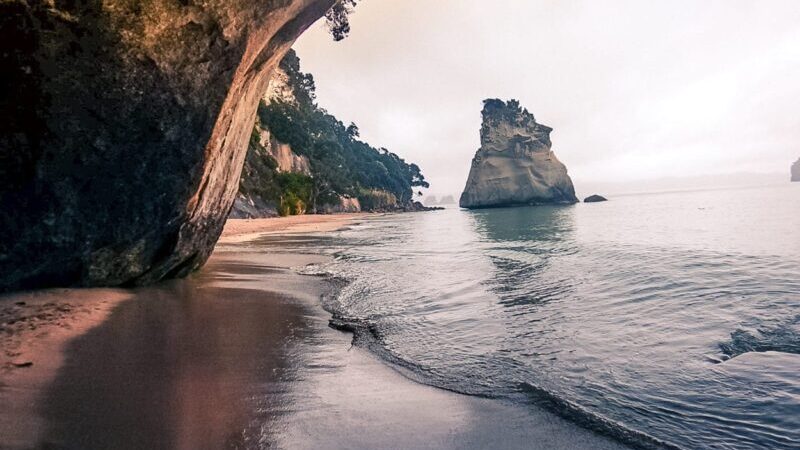
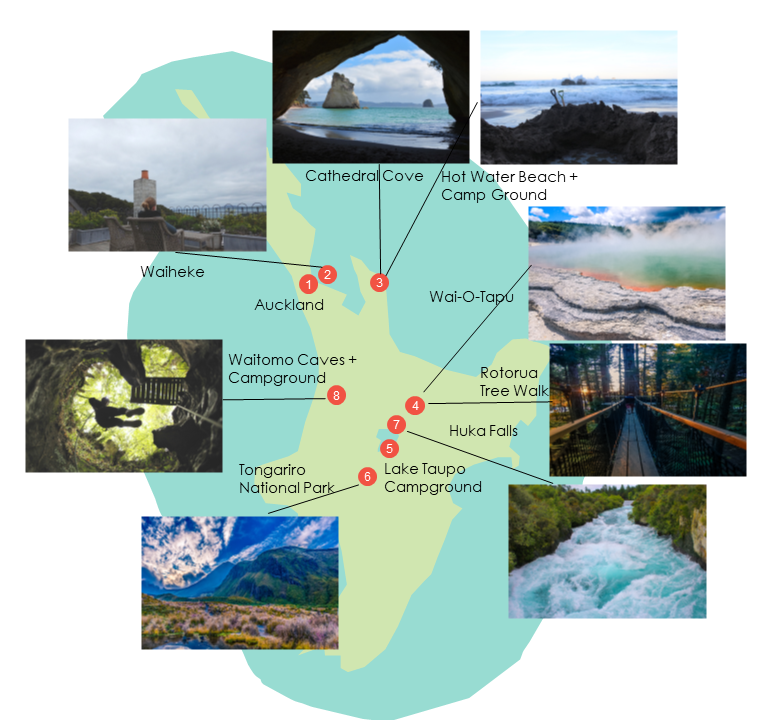
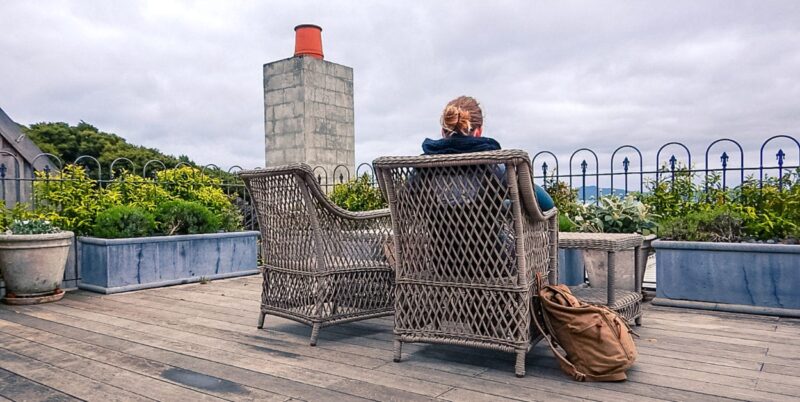
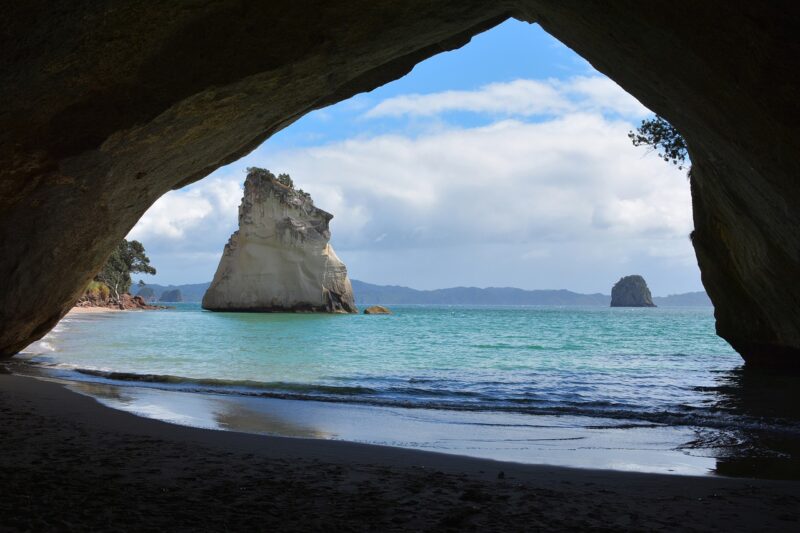
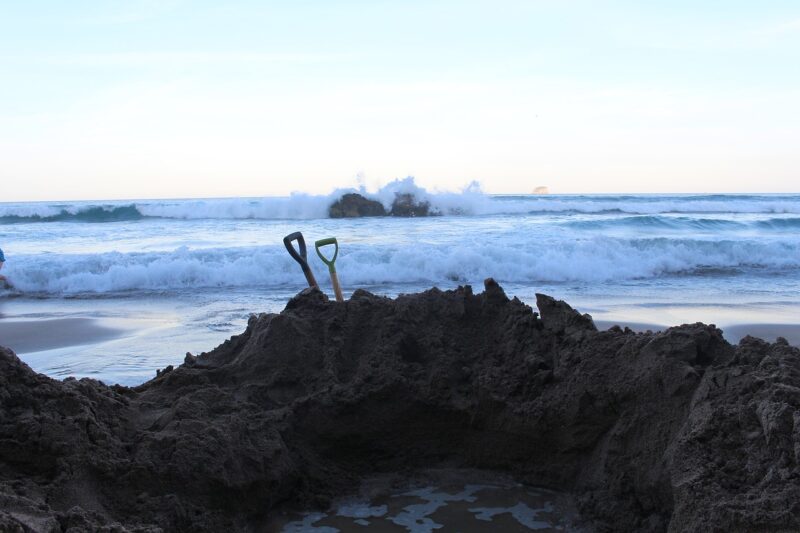
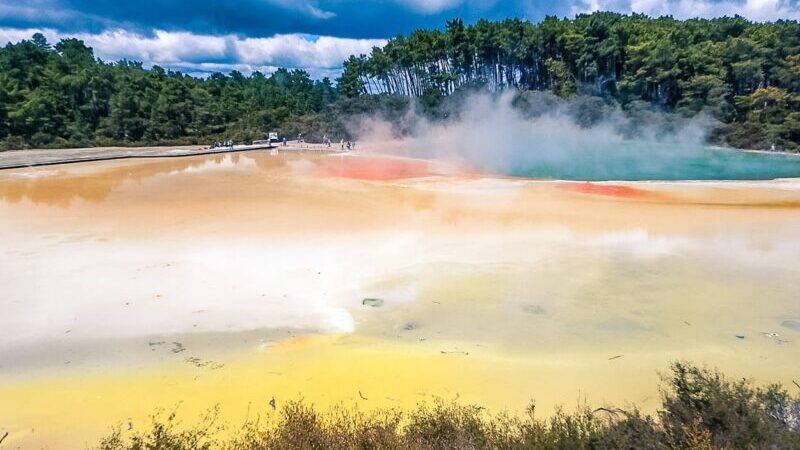
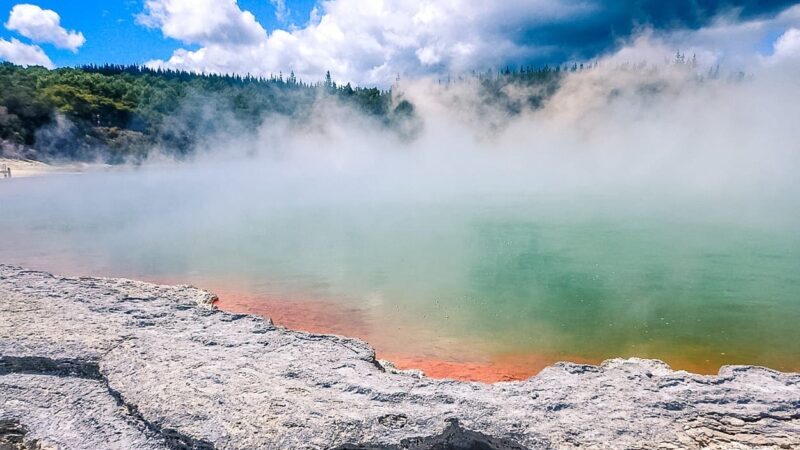
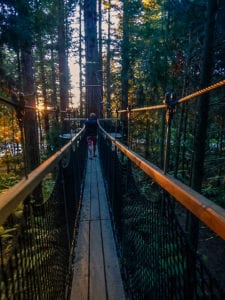
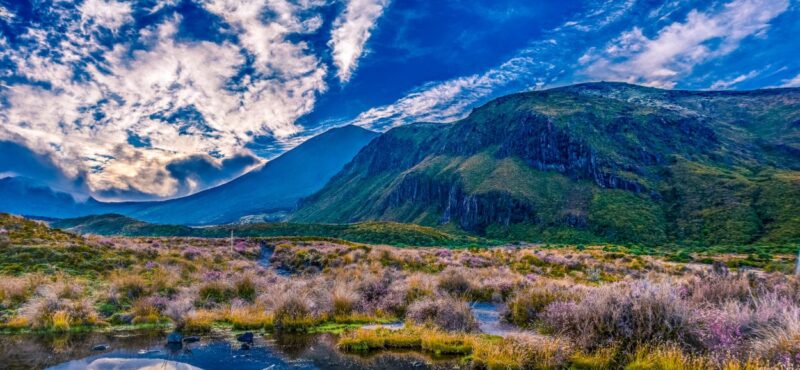
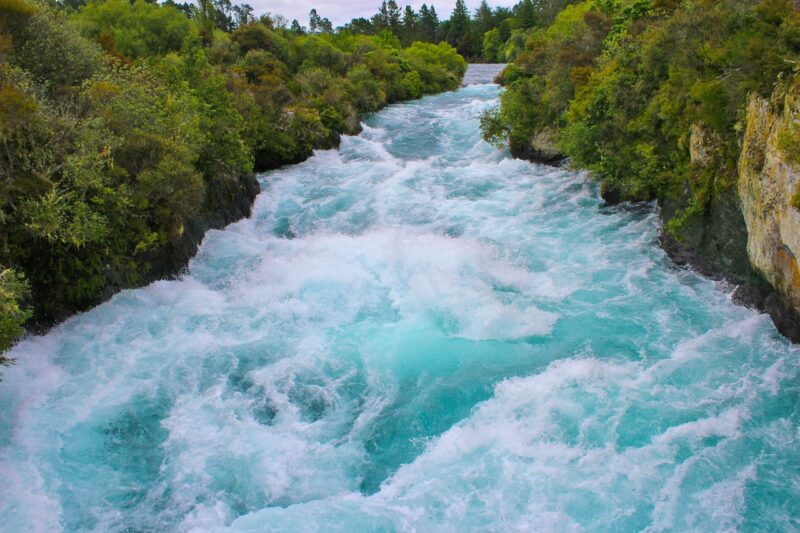
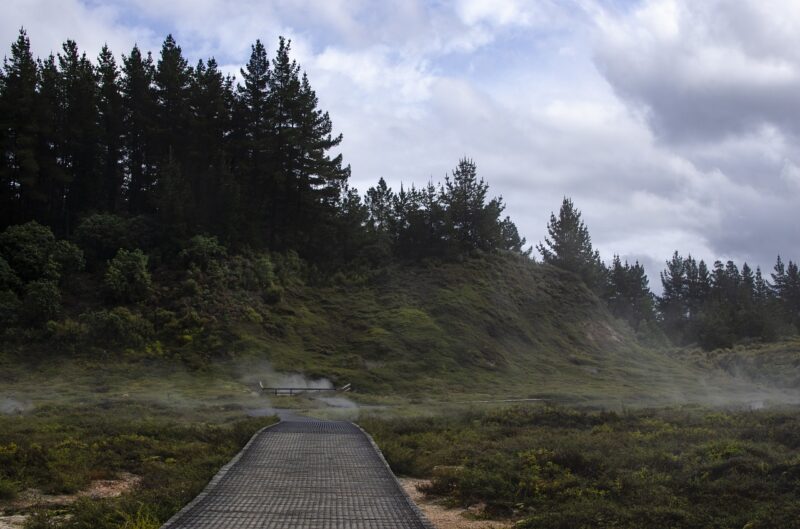
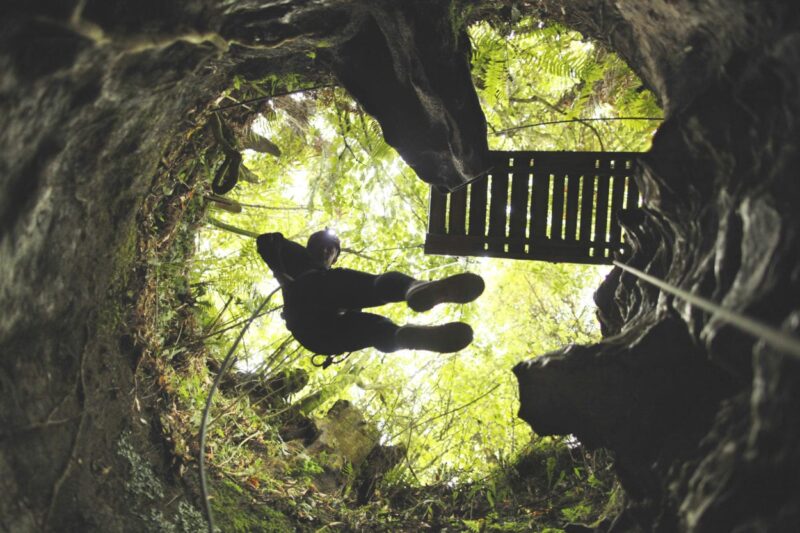

I Loved reading about your intinerary and seeing all your great pics 🙂
Sounds like an amazing itinerary! Unfortunately, I never been to New Zealand but I would love to go there for such a long time.
This is exactly what I needed to read today. NZ has been on my list for far too long now!
I like the view from the hot spring bath and the lights from Redwood Walk in the dark are pretty. How high was the catwalk?
What a fabulous trip you had. The hot water beach sounds amazing. I have never been to anything like that before. Definitely adding to my list. Plus abseiling down a cave sounds so adventurous. ?
Looks like you had a great trip – traveling in a camper van sounds awesome since you have so much flexibility, which is awesome in a country where everything is beautiful!
Such a bucket list worthy trip!!! I’ve always wanted to travel in a camper van. That Black water rafting tour looks insane!! I have to experience that!
Didn’t even know that camper van trip is the thing to do in New Zealand! 😀 Oh my, yours was so colorful, love it! It probably gives a special feeling to the whole journey.
Also, given that it is so cold, that Hot Water Beach sounds like a great stop. Would love to plunge in there. 🙂
I never really thought about exploring New Zealand before but it looks like such an amazing way to get around. Just look at that scenery! I’d love to go one day.
I did a very similar trip, campervan and all, in March! Our Tongariro Hike was canceled so I was absolutely gutted, but we got to see many amazing things! So much fun!
I would love to visit the New Zealand. The more photos I see, the more I want to go. Thanks for sharing!
What a great article 🙂 totally loved all the the insights 🙂
Doing a trip to NZ next year and trying to decide about the camper van. Are they really that easy to drive for those of us used to driving on the other side of the road? And easy to park? I know that you said it was, but I am still wondering. And how long do I need for north and south island?
I found them pretty easy to drive! It was no different than driving a normal car, just a little extended. Mine was a bit older though too, so it wasn’t going anywhere too fast. I also appreciated the company having a little sign that is left on the dashboard that reflected up into the window that said “Keep left!” it wasn’t hard to keep to the opposite road. Only times I had to think a little bit more was turning down smaller roads, and on roadabouts.
If you want to fully do the Island, it would probably need two weeks. I was crunched with one week and only really visited half of the north island. I would say about two weeks for the south island as well. And when I’ve talked to most, they prefer the South Island for nature!
You picked some great spots in the North Island to visit. Waitomo Caves is fascinating, isn’t it? I love the Coromandel, it’s beautiful and it isn’t a trip to NZ without completing the Tongariro Crossing.
Should have taken in The Driving Creek Railway & Pottery in Coromandel, sensational little train ride to the top of a big hill
Ooh wow I’m definitely saving this! I’m hoping to go New Zealand this summer, and these nature spots look amazing!
This is a fabulous itinerary! I’m going to use some of it for our New Zealand Trip this year. I can’t wait for the wineries, especially on Waiheke Island!
I would love to roam New Zealand in a campervan! This has been on my bucket list for a very long time. I love how your itinerary has the perfect mix of adventure and relaxation.
This post brings back so many happy memories of some amazing places, thank you!
[…] Source by hillrunner3 […]
[…] Source by BackwaterReview […]
[…] for the Escape Campervan, you can read my review of Escape Campervans. I used them before in a North Island Road trip in New Zealand, and enjoy the simplicity of the vans, and the colorful exteriors. I planned my trip around using […]